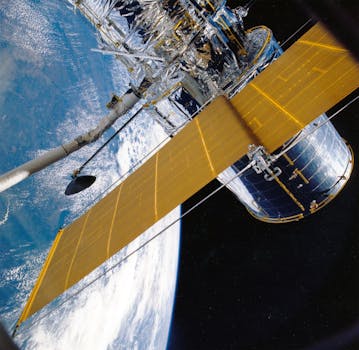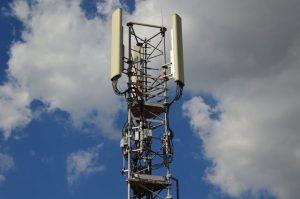
The future of satellites is a highly anticipated and rapidly evolving field, with significant advancements in technology and innovation. Future of satellites is set to revolutionize the way we communicate, explore space, and understand our planet. With the increasing demand for global connectivity, satellites are playing a vital role in providing internet access to remote and underserved areas, bridging the digital divide and enabling new opportunities for economic growth and development.
Satellites have been in use for decades, but recent breakthroughs in satellite technology have opened up new possibilities for their application. The development of smaller, more affordable satellites, such as CubeSats and SmallSats, has made it possible for companies and organizations to launch their own satellites, increasing the number of satellites in orbit and expanding the range of services they provide. Additionally, advancements in propulsion systems, power generation, and communication equipment have improved the performance and efficiency of satellites, allowing them to stay in orbit for longer periods and transmit larger amounts of data.
One of the most significant applications of satellites is in the field of global communication. Satellites provide a means of transmitting data, voice, and video signals over long distances, connecting people and communities around the world. With the growing demand for internet access, satellites are playing an increasingly important role in providing broadband connectivity to remote and underserved areas. Companies such as SpaceX, Amazon, and OneWeb are launching constellations of satellites in low Earth orbit to provide high-speed internet access to communities around the world.
Space Exploration and Satellite Technology
Satellites are also playing a critical role in space exploration, enabling scientists to study the Earth, other planets, and the universe in greater detail. Satellites such as the Hubble Space Telescope and the Kepler Space Telescope have revolutionized our understanding of the universe, while satellites such as the Mars Reconnaissance Orbiter and the Cassini-Huygens mission have provided valuable insights into the geology and atmosphere of other planets. The use of satellites in space exploration is set to continue, with missions such as the James Webb Space Telescope and the Europa Clipper mission, which will study the formation of the universe and the potential for life on Jupiter’s moon Europa.
In addition to their role in global communication and space exploration, satellites are also being used for a range of other applications, including navigation, weather forecasting, and Earth observation. The Global Positioning System (GPS) is a network of satellites that provide location information and timing signals to GPS receivers on the ground, while weather satellites such as GOES-R and Himawari-8 provide high-resolution images of the Earth’s atmosphere and oceans. Satellites such as Landsat 8 and Sentinel-2 are used for Earth observation, providing data on the health of crops, the extent of deforestation, and the impact of climate change.
The future of satellites holds much promise, with advancements in technology and innovation set to continue. The development of new materials and manufacturing techniques is expected to lead to the creation of even smaller and more affordable satellites, while advancements in artificial intelligence and machine learning are expected to improve the performance and efficiency of satellite systems. Additionally, the growing demand for satellite-based services is expected to drive investment and innovation in the field, leading to new opportunities for companies and organizations to develop and launch their own satellites.
Challenges and Opportunities
Despite the many benefits of satellites, there are also challenges and opportunities that must be addressed. One of the main challenges facing the satellite industry is the growing problem of space debris, which poses a risk to the safety of satellites and other spacecraft in orbit. The development of new technologies and strategies for removing debris from orbit is essential to ensuring the long-term sustainability of space exploration and development.
Another challenge facing the satellite industry is the need for greater international cooperation and regulation. The use of satellites is a global phenomenon, and the lack of clear regulations and standards can create confusion and conflict. The development of international agreements and standards for the use of satellites is essential to ensuring that the benefits of satellites are shared by all, while minimizing the risks and challenges associated with their use.
In conclusion, the future of satellites is a rapidly evolving field, with significant advancements in technology and innovation. Satellites are set to revolutionize global communication, space exploration, and more, providing new opportunities for economic growth, development, and scientific discovery. While there are challenges and opportunities that must be addressed, the future of satellites holds much promise, and it is essential that we continue to invest in and develop this critical technology.
Conclusion
The future of satellites is an exciting and rapidly evolving field, with significant advancements in technology and innovation. From global communication and space exploration to Earth observation and navigation, satellites are playing an increasingly important role in our daily lives. As we look to the future, it is essential that we continue to invest in and develop this critical technology, addressing the challenges and opportunities that arise and ensuring that the benefits of satellites are shared by all.




